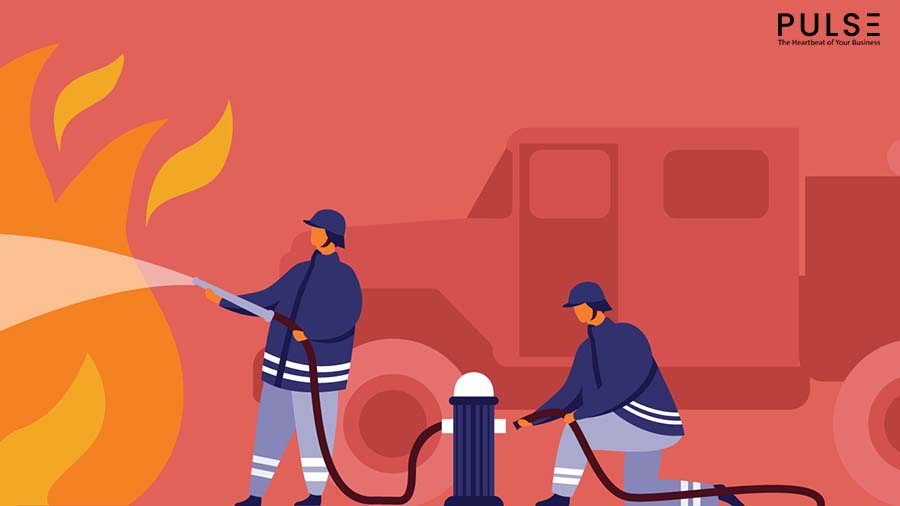Every year, thousands of workers in the United States get ill from heat exposure. According to the U.S. Bureau of Labor Statistics, 58 people lost their lives in 2019 due to extreme temperatures at the workplace. In most cases, heat-related fatalities occur during the first few days as the body gradually acclimatizes to the heat over time.
Since millions of workers in the United States are exposed to heat, it is crucial to know about OSHA guidelines on workplace heat and temperature management.
OSHA Guidelines for Workplace Heat
At present, Federal OSHA does not have a national workplace heat standard. Instead, OSHA has a General Duty Clause (Section 5[a][1] of the Occupational Safety and Health Act of 1970) that requires employers to provide a workplace that is “free from recognized hazards that are causing or are likely to cause death or serious physical harm to employees.” These also include heat-related hazards that can cause severe bodily harm and death.
However, in September this year, president Joe Biden tasked OSHA to develop new heat standards for employees who work outdoors and indoors in extreme heat. The new workplace guidelines will likely include rules and regulations related to breaks, shade access, and water availability when a specific temperature is reached at a particular workplace.
The list of industries where workers have suffered heat-related illness or fatalities are as follows:

Preventing Heat-related Illness
As we have seen above, heat-related illnesses can affect employees in various industries. Therefore, it is a severe occupational hazard at the workplace, and businesses must take appropriate measures to ensure the temperature at the job sites is under control.
Businesses and organizations can adhere to OSHA guidelines by creating a heat illness prevention action plan and daily supervision at the workplace.
1. Heat Illness Prevention Plan
Employers should come up with written guidelines on how their business will tackle heat-related illnesses and injuries. When creating a comprehensive action plan for extreme heat hazards, it’s essential to answer the following questions:
- How can new workers acclimatize to heat and develop heat tolerance?
- Are temporary workers more prone to heat-related illness?
- Who will supervise heat-related OSHA guidelines on a daily basis?
- Are workers returning from extended leave (two weeks or more) susceptible to heat illness?
- What are the ways to measure and reduce heat stress at the workplace?
- How to respond to the heat advisory issued by the National Weather Service?
2. Daily Supervision
The temperature at the workplace can change abruptly without notice, and it is up to the management to ensure that proper temperature is maintained throughout the day. That is why it is crucial to have a dedicated individual responsible for monitoring the heat hazards and implementing the employer’s heat illness prevention plan.
The individual can be a foreman, supervisor, or plant manager who is given proper training daily to identify and manage heat hazards. They should also know how to provide first-aid for heat-related illnesses and injuries. It is preferable to have an individual who is present on-site with the workers to ensure that heat stress is accurately measured.
Risk Factors Associated with Heat Hazards
Employers should understand that some workers can work in hot working conditions better than others. Many factors can affect a person’s ability to tolerate extreme heat for a longer duration, such as:
- Obesity (with BMI greater than 30 kg/m2)
- Diabetes, heart diseases, and high blood pressure
- Low physical fitness
- Certain medications, alcohol, and illicit drugs such as cocaine, opioids, and methamphetamine
1. Physiological Monitoring
Human bodies respond automatically to heat stress. That is why employers must have an employee health monitoring program to identify workers prone to heat-related illness. In addition to that, workers should be given proper training about personal risk factors that make them prone to heat hazards.
Another great way to manage heat stress is to look for its physiological symptoms in employees. Are they sweating profusely? Is their heart rate regular? Is their body temperature higher than usual? These physiological data can be measured and recorded by simple, easy-to-use heart rate monitor devices and thermometers. Workers should also be trained to count their pulse using their watches.
Final Words
Specific OSHA guidelines that deal with workplace temperature are still a work in progress, and it will take a couple of years before they are in effect. Nevertheless, it is a good idea to start early when it comes to managing heat hazards. Proper and timely inspection at regular intervals is essential to avoid litigations and penalties in the future.
Pulse is a cost-effective EHS platform that can help you create checklists and inspection schedules for heat hazards. Create a free account and get a free trial of PulsePro.
